We are taking a break for a few years
We are stopping sales for a few years for time reasons.
We are stopping sales for a few years for time reasons.
This page is no longer maintained. From now on you will only find our range of plants, acorns and oaks on Ebay:
Many other oak species can currently be found in our Ebay store:
https://www.ebay.de/str/klimasamen
Quercus wislizeni.
Quercus wislizeni is native to many areas of California and southwards to Baja California in Mexico.
Quercus arkansana: This oak species occurs in a few locations in the south-east of the USA.
It is considered endangered.
Quercus polymorpha:
The Mexican white oak is native to the state of Texas in the USA and is also found in Mexico.
Quercus shumardii
Quercus shumardii is one of the largest oak species in the red oak group. It is closely related to Quercus Buckleyi, Quercus Texana and Quercus Gravesii.
Quercus castaneifolia:
The distribution area is in Iran and Azerbaijan.
The species is thermophilic and mostly frost-hardy
Quercus eduardi:
Quercus eduardi grows in only a few regions in Mexico at altitudes above 2200 meters.
Qurcus infectoria veneris:
This species originates from the eastern Mediterranean region and western Asia. The tree only grows about 6 meters high.
Not frost-tolerant!
Quercus agrifolia:
The species is native to California. The species grows west of the Sierra Nevada from Mendocino County in the north southwards to the Mexican state of Baja California.
Quercus libani:
The Lebanon oak is native to Syria and Asia Minor
Quercus lyrata: The distribution area is in the northeast and southeast of the USA.
Quercus wislizeni:
Quercus wislizeni is native to many areas of California and south to Baja California in Mexico.
Quercus hintonionum
Originally found only in the Mexican states of Coahuila and Nuevo León.

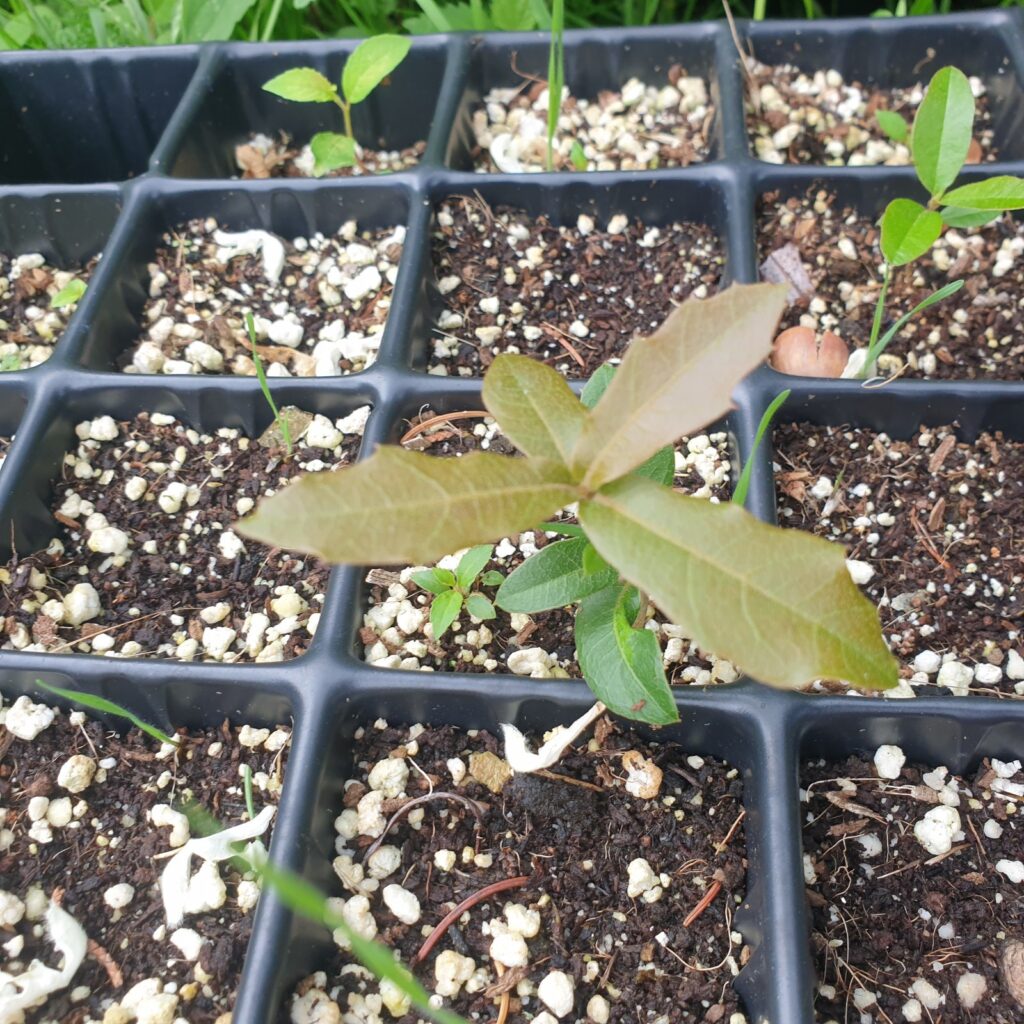
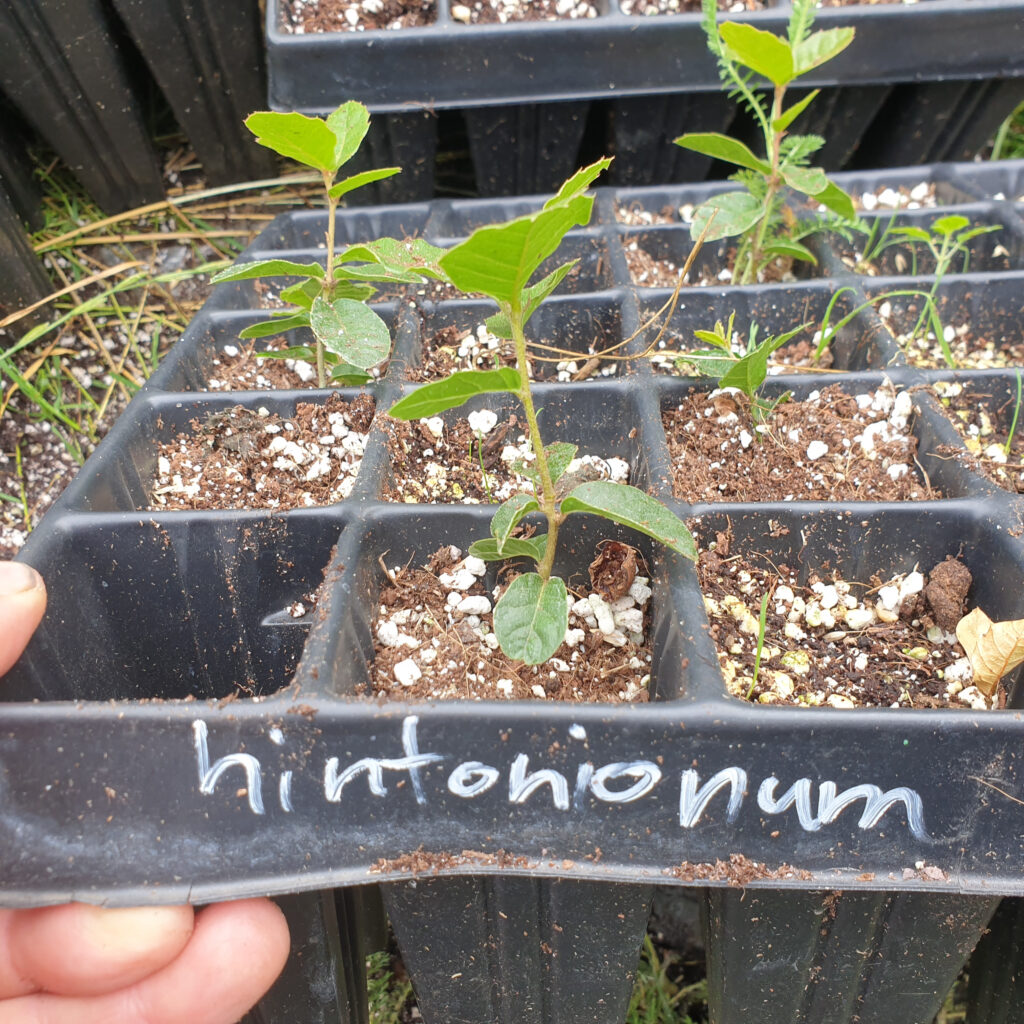
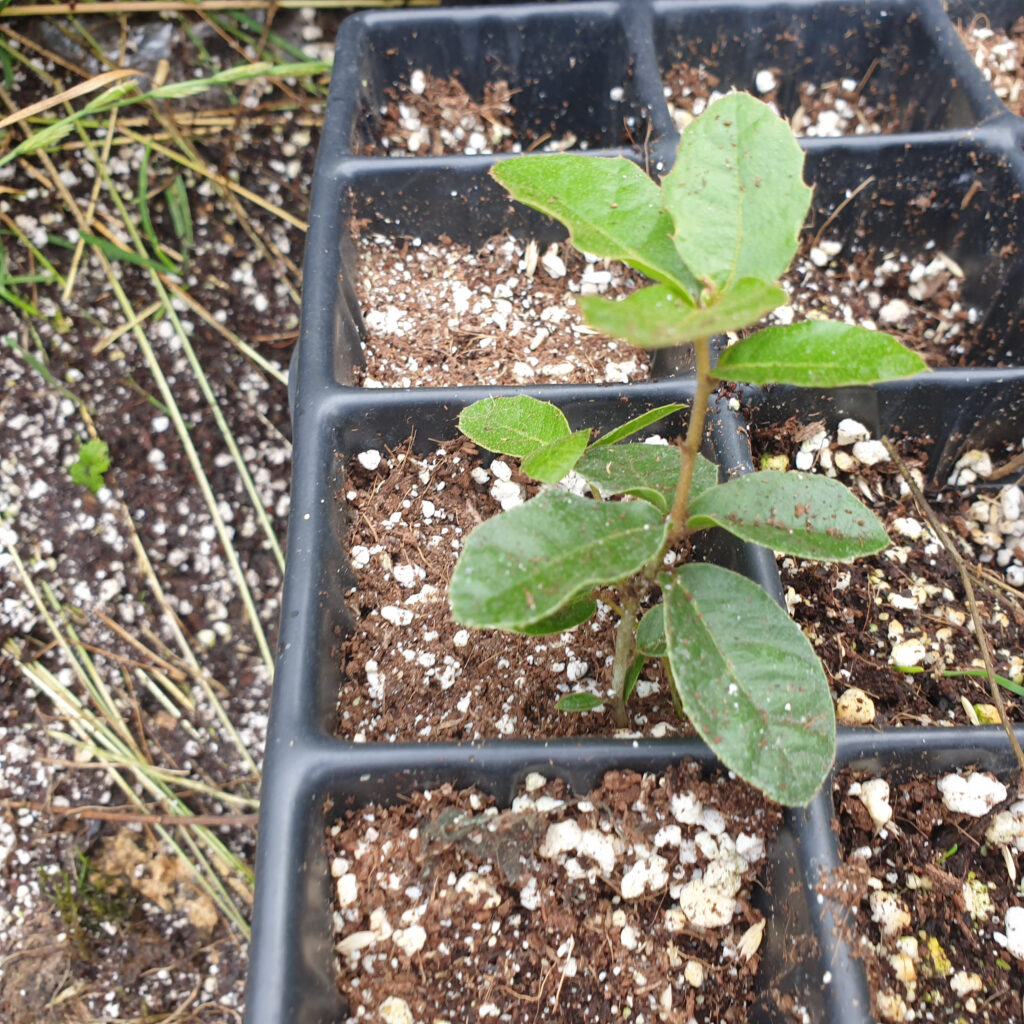
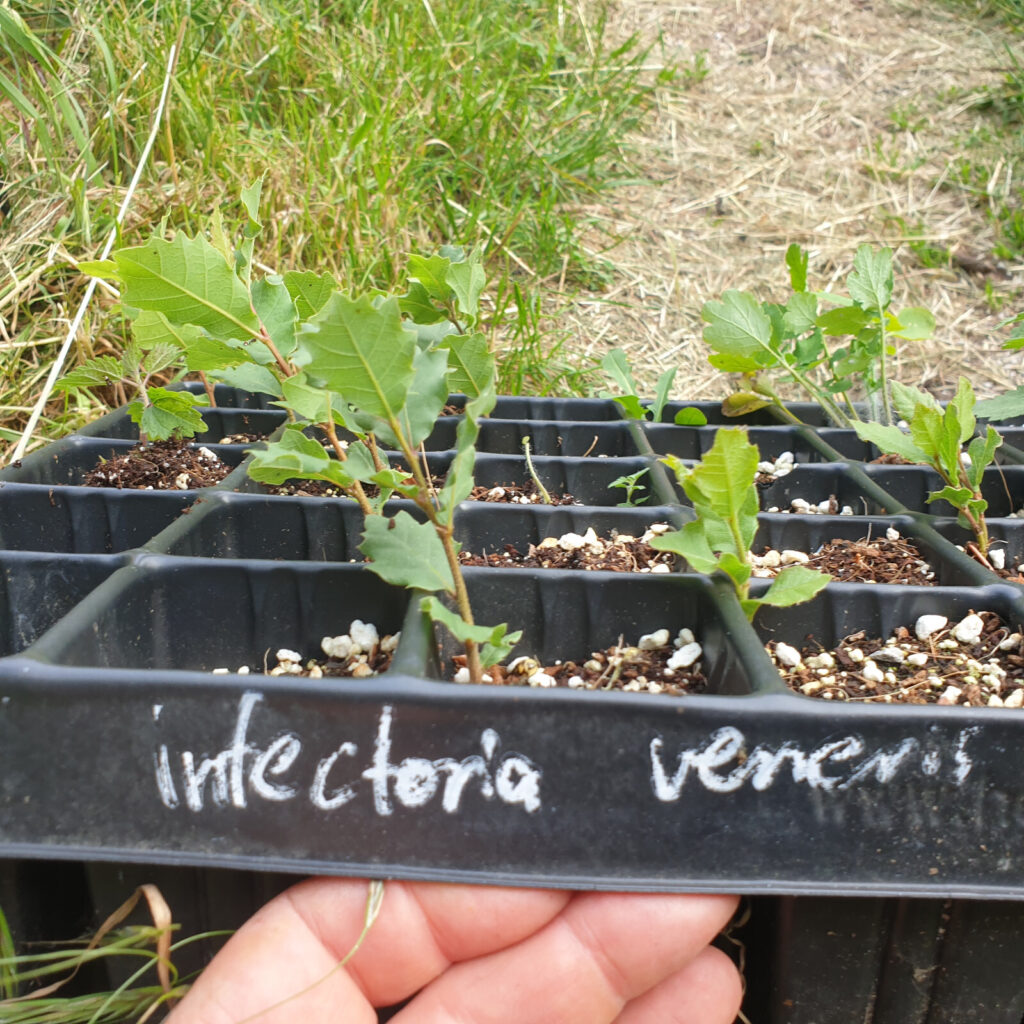




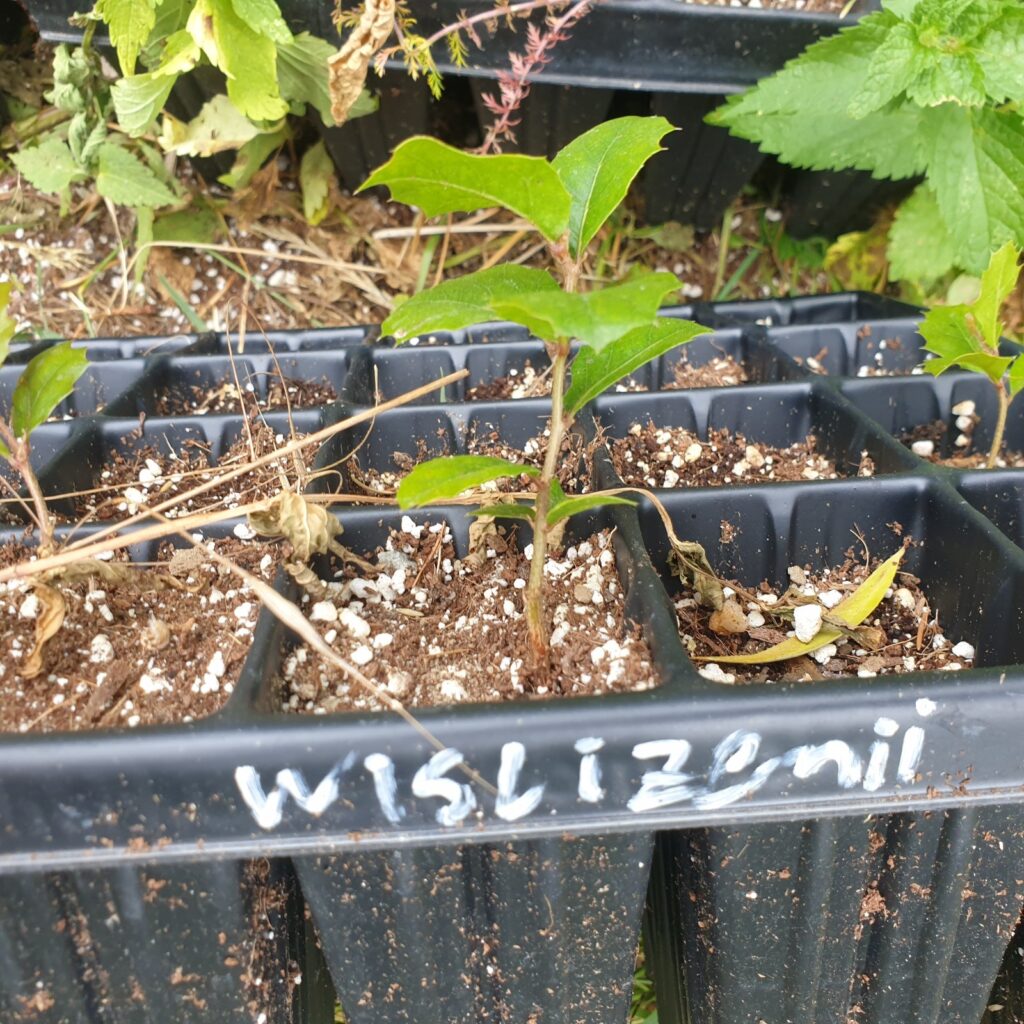
Some oak species and other special plants are for sale. The seedlings are between 5 and 15 cm high and are sent in small pots with coconut soil and perlite.
We currently have: Quercus hirtifolia, Prunus dulcis (almond tree), Quercus crassipes, Quercus frainetto, Quercus hartwissiana, Quercus acerifolia, Quercus buckleyi, Aesculus carnea (red horse chestnut), Aesculus hippocastanium (common horse chestnut).
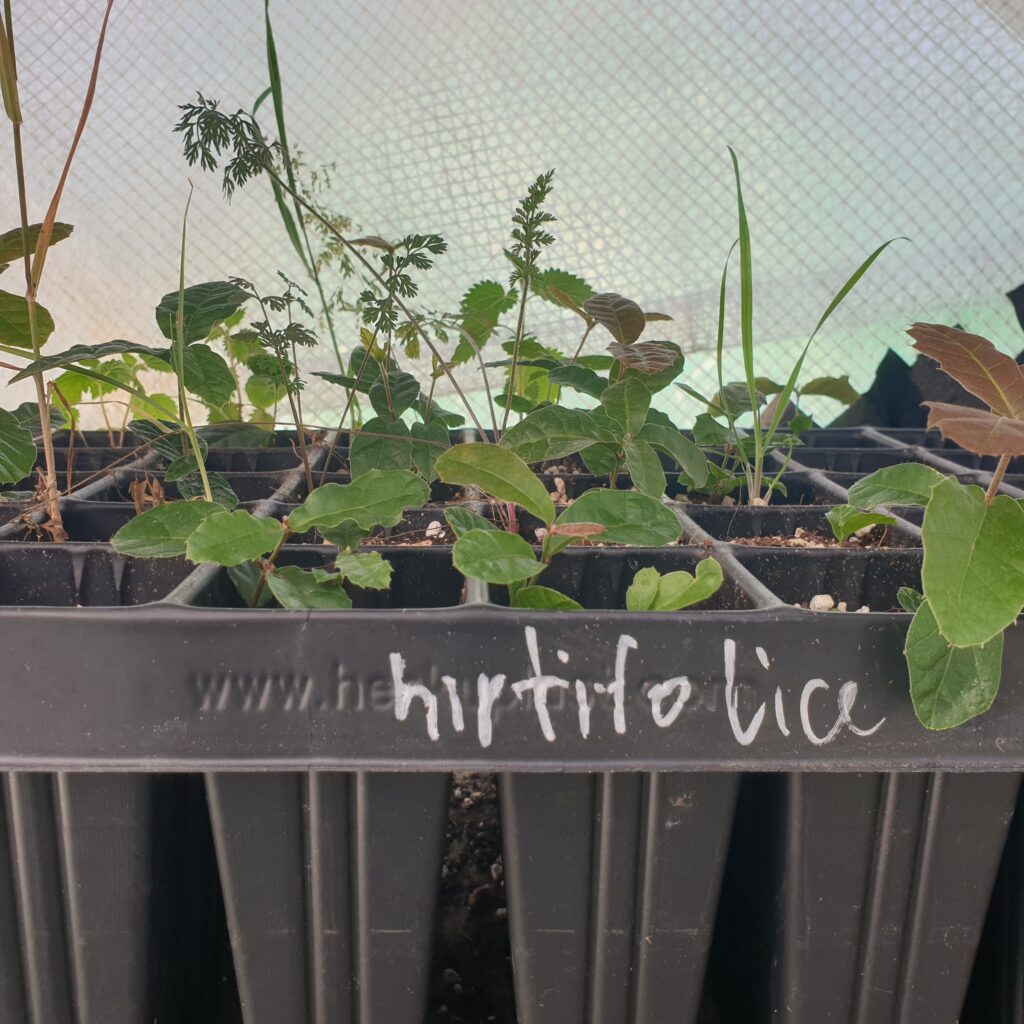
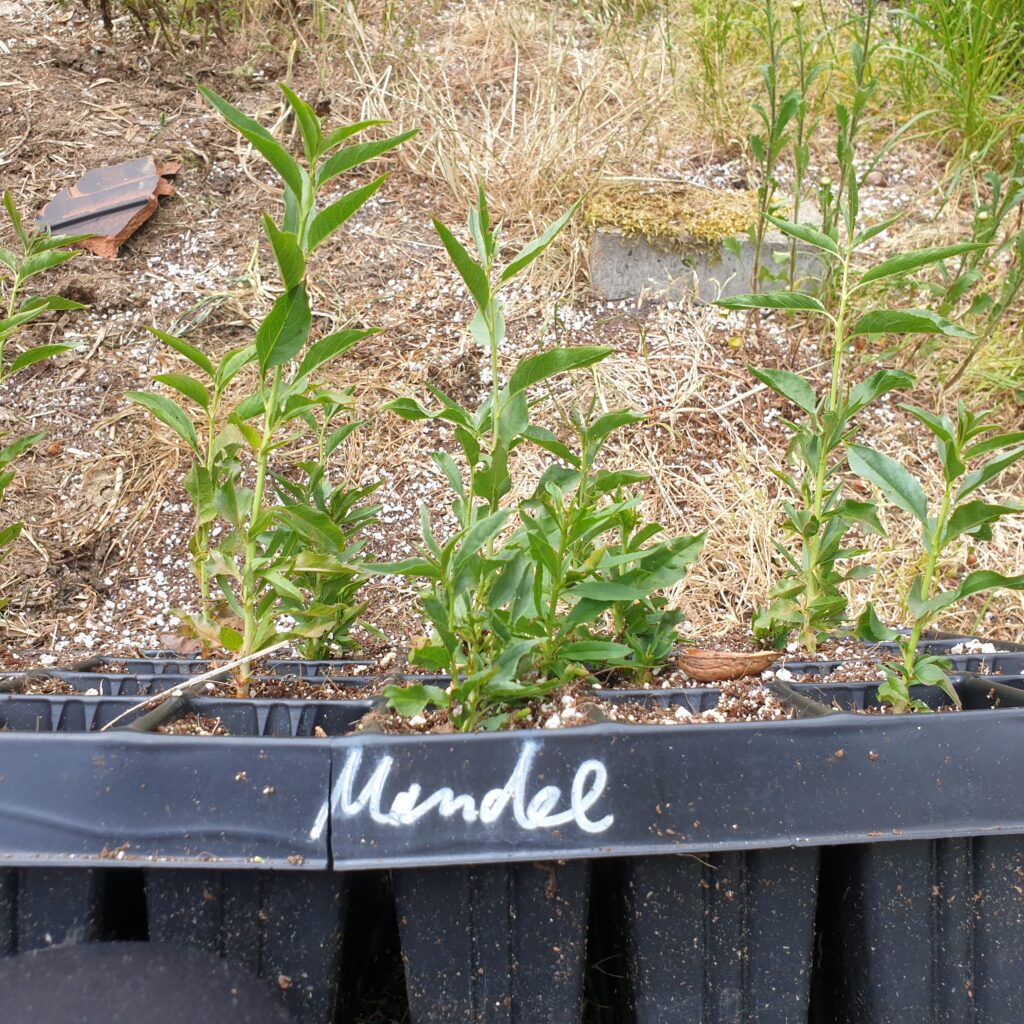
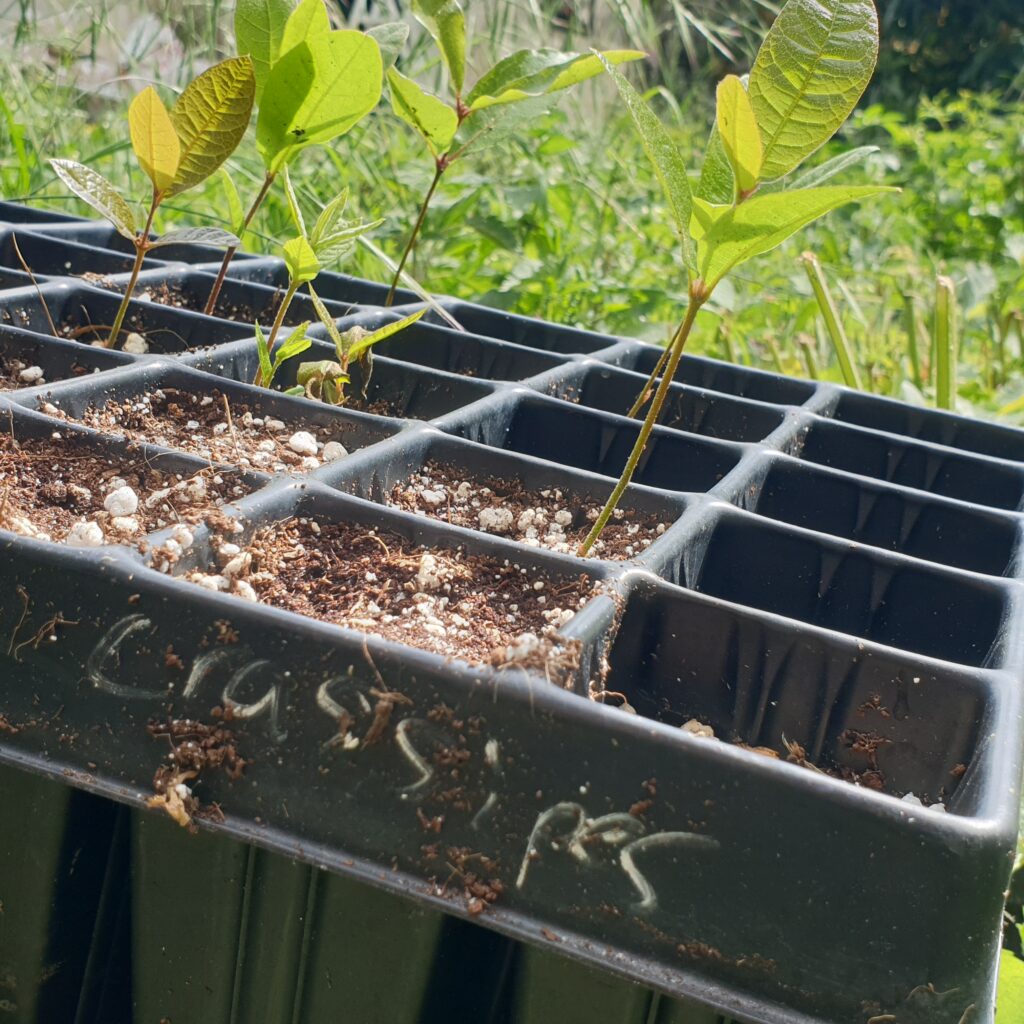


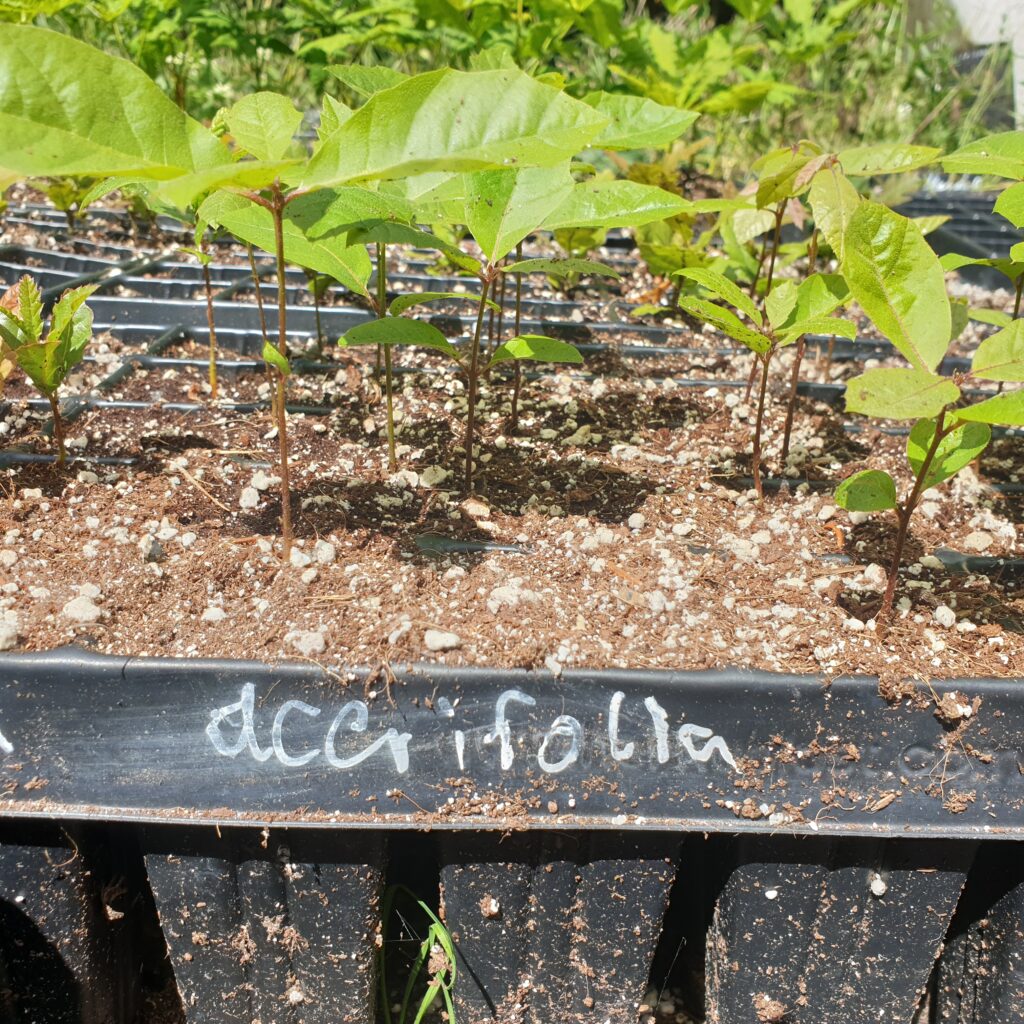

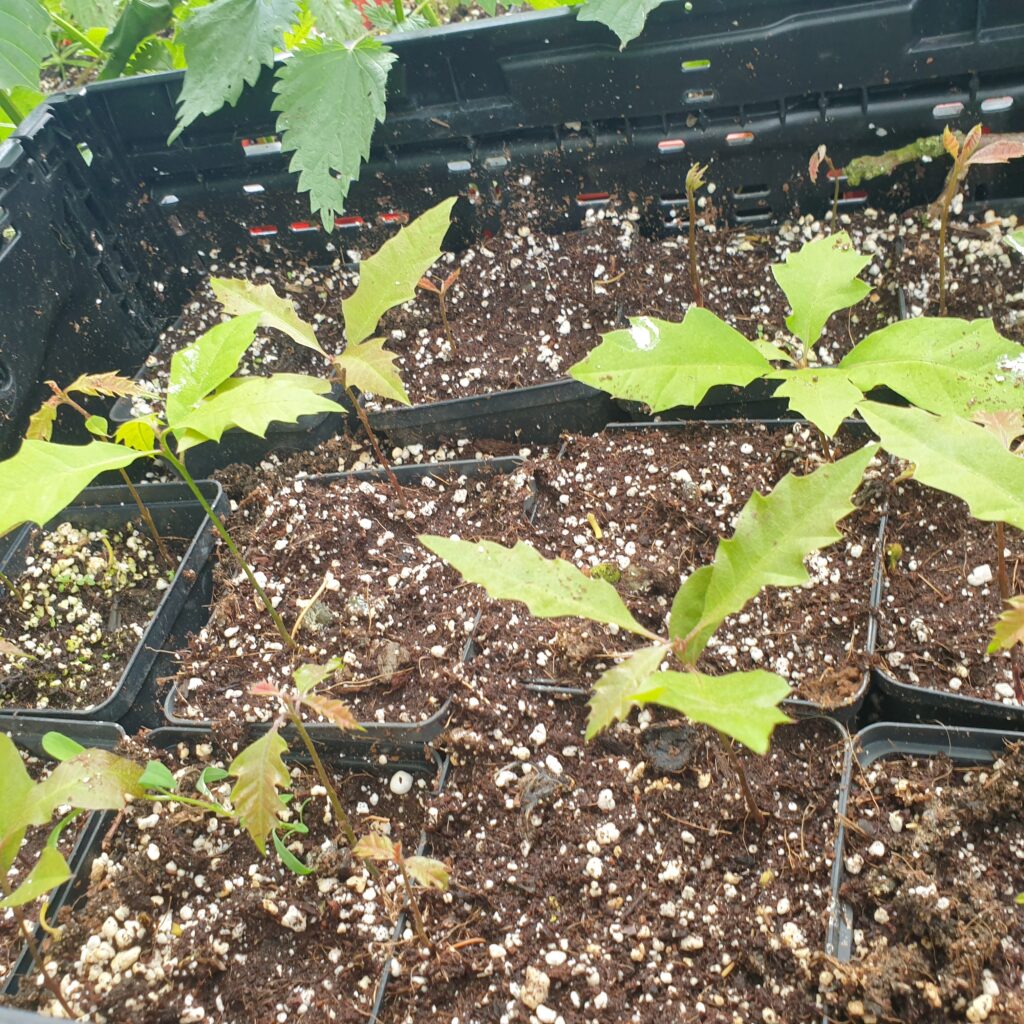
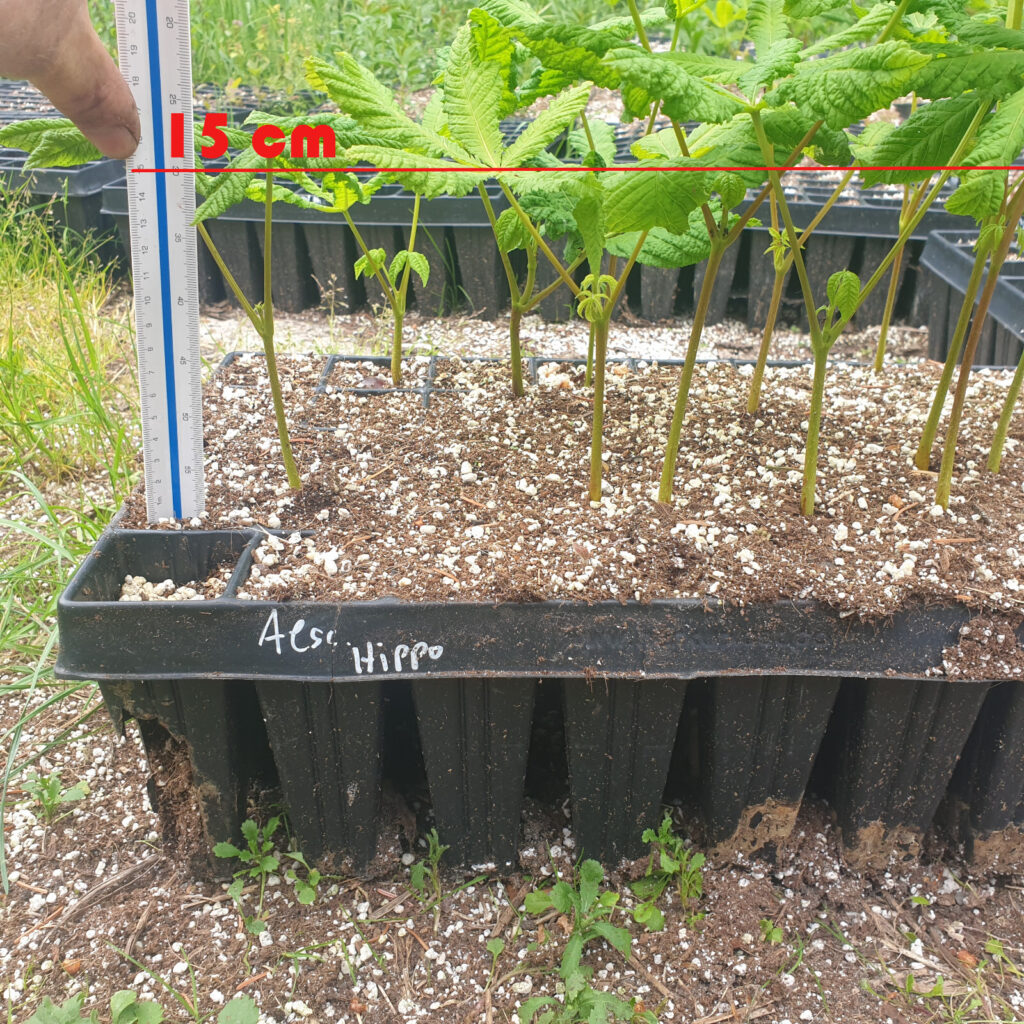
It took a long time and a lot of negotiations, but now they are here. Various acorns (oak species) from the south of the USA.
E.g. from North and South Carolina, Georgia, Alabama, Mississippi, Louisiana, Arkansas, Tennessee and Kentucky.
Most of the oak species sold here for the first time are resistant to global warming.
The species can be found here in the store: https://quercus.guru/shop/.
What would we have there?
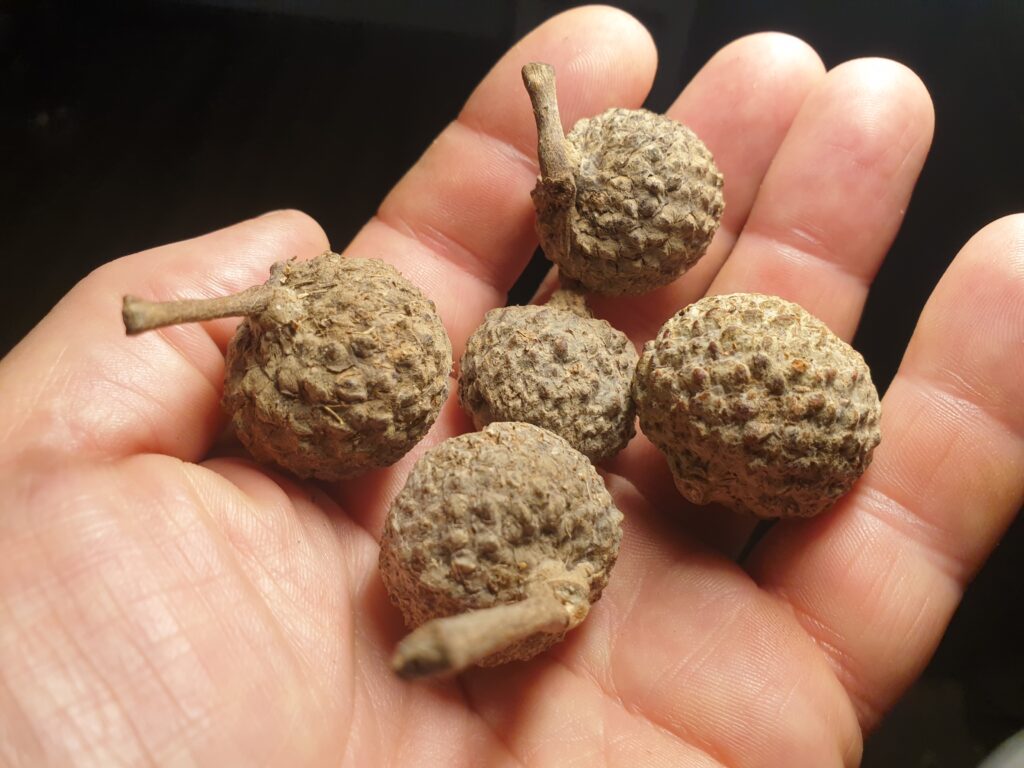
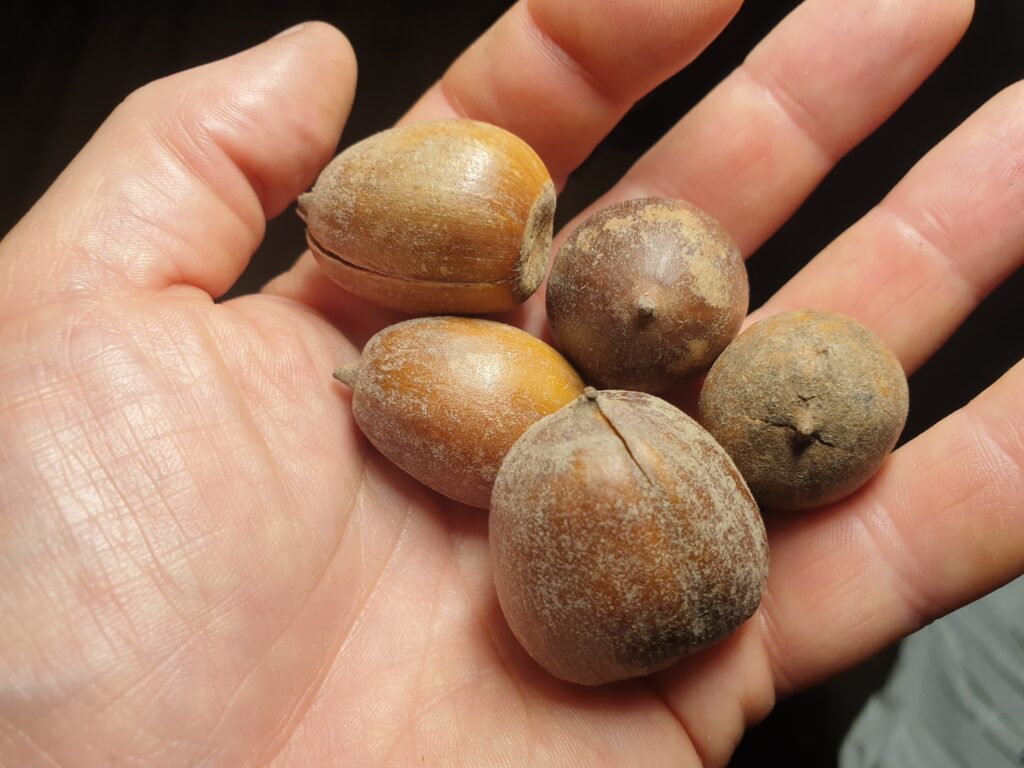
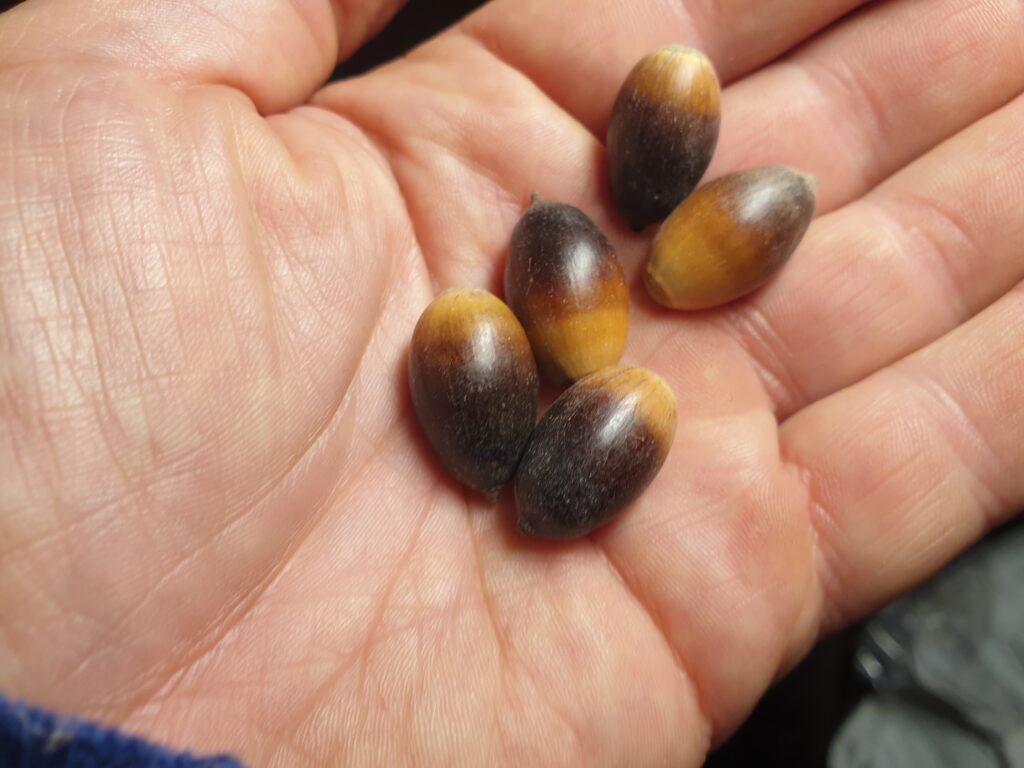

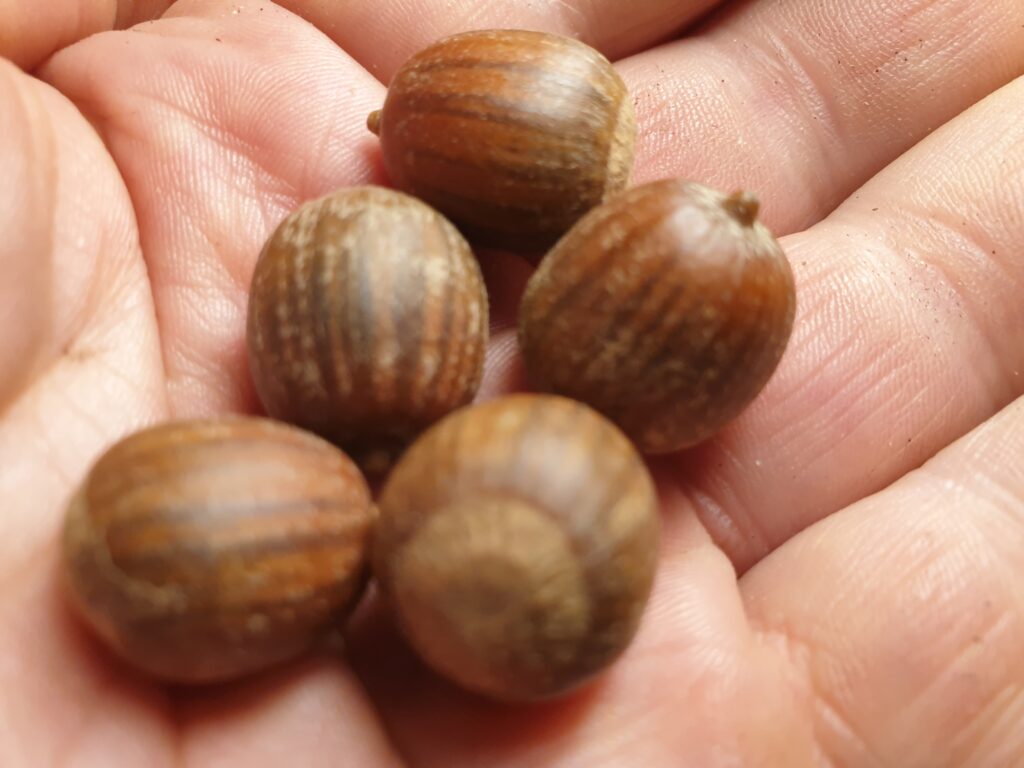
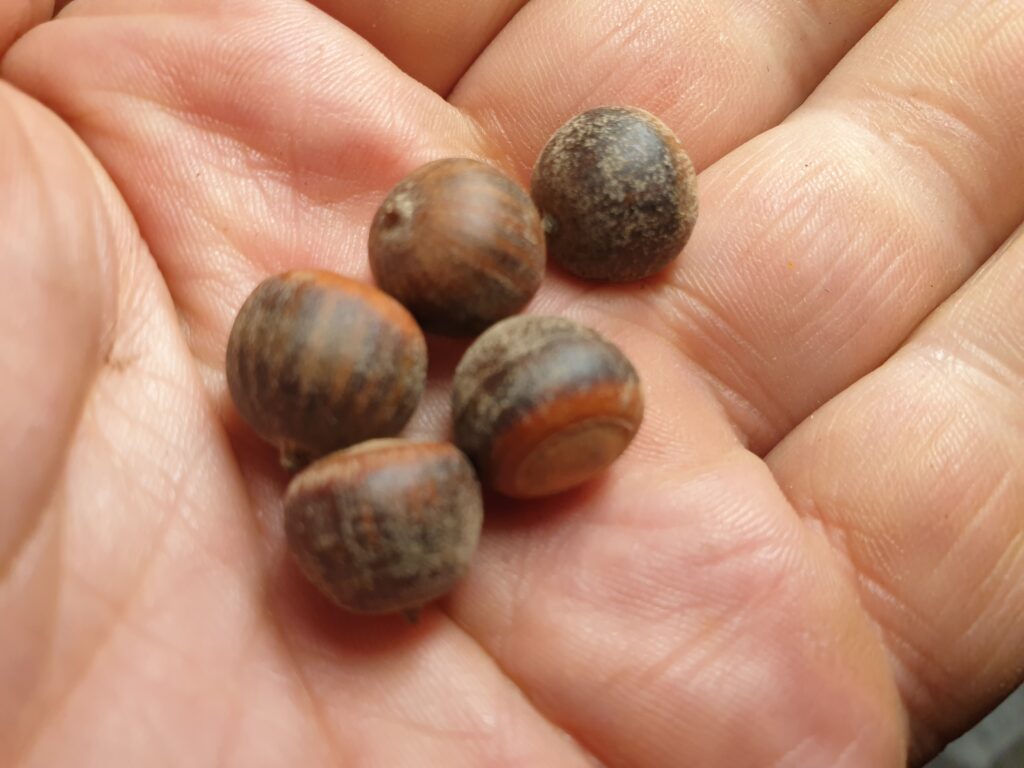
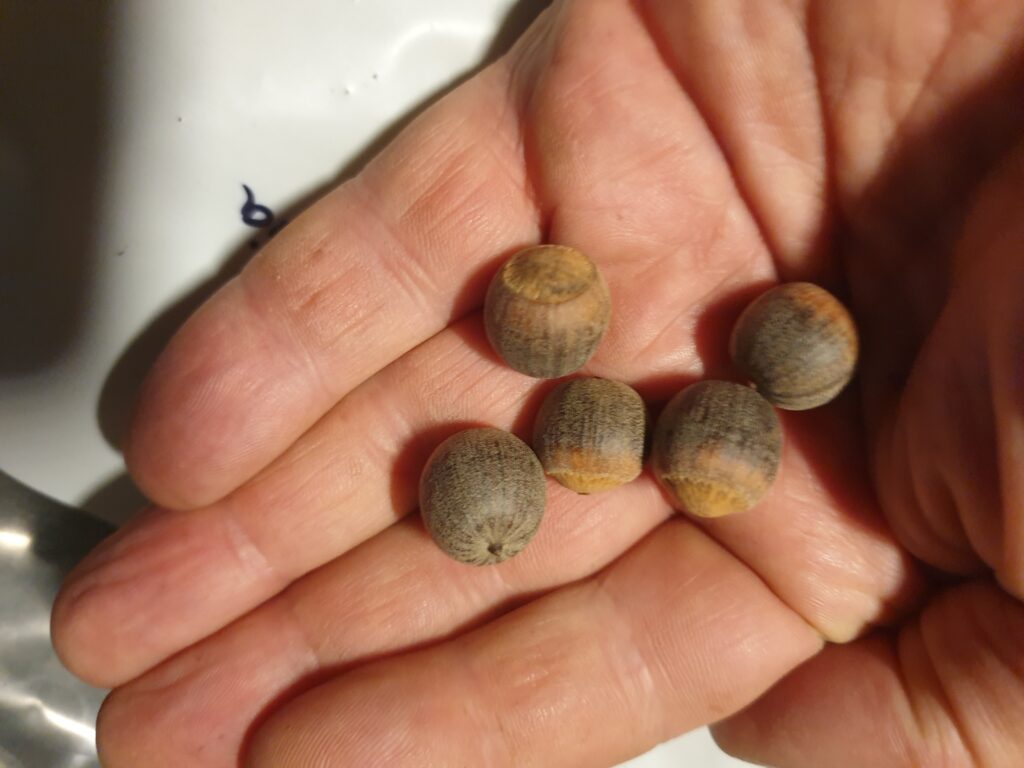
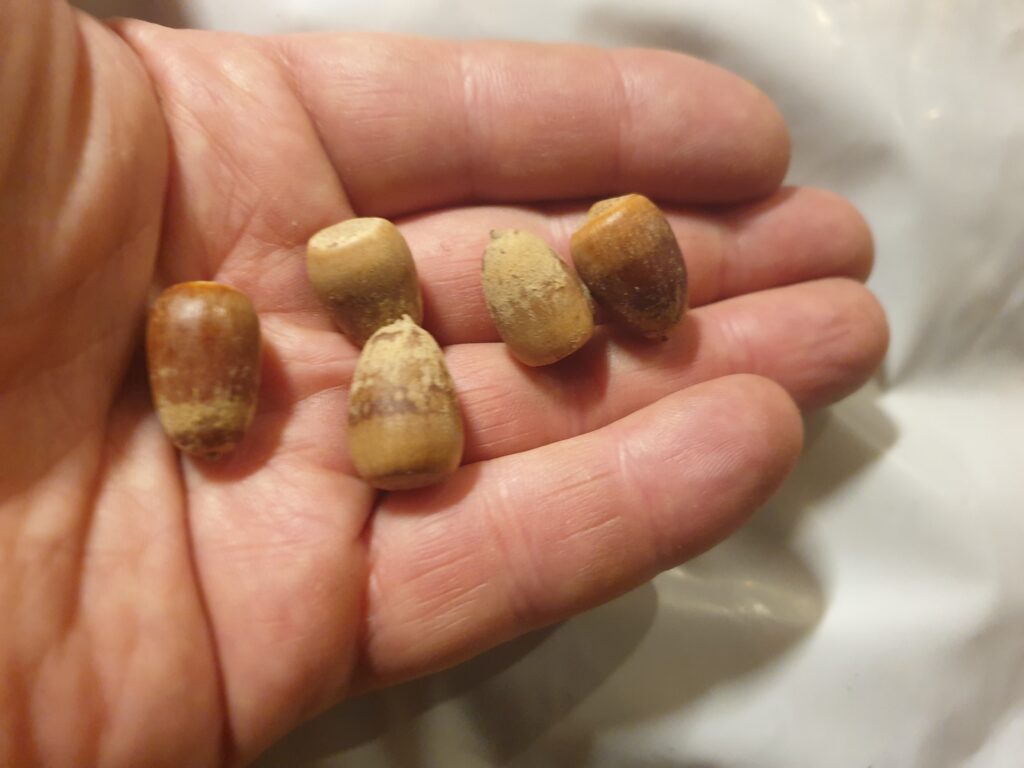
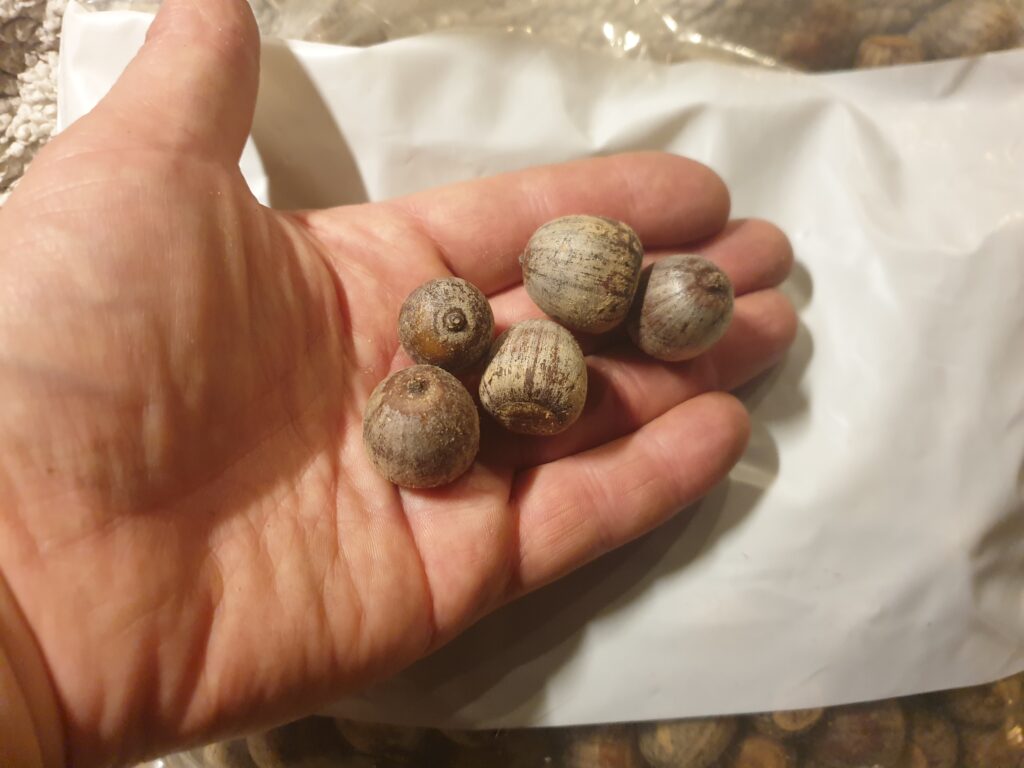
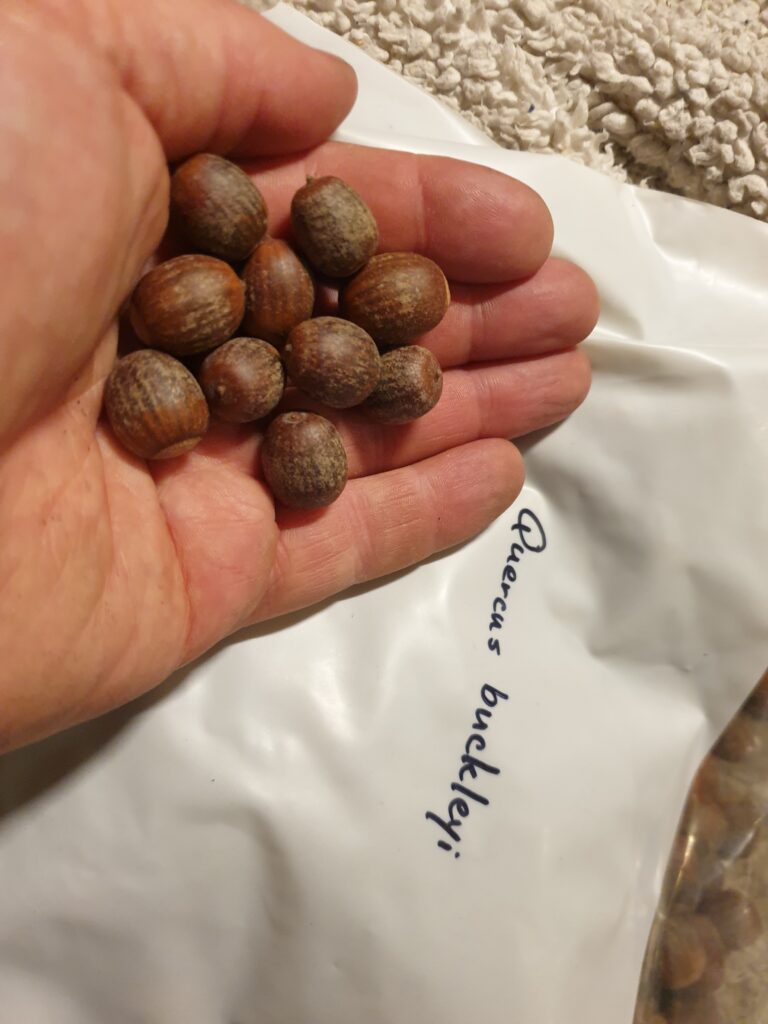
Well, for example Quercus michauxi. This species grows up to 30 meters high. This species is rarely used commercially. It occurs from Indiana and Illinois to Texas and Floria.
Quercus virginiana (Virginia oak or live oak): This species is almost evergreen. It is also found in Mexico and grows up to 35 (!) meters tall. The live oak is the symbol of the state of Georgia.
Quercus texana is considered a fast-growing oak. It likes nutrient-rich soils and is very hardy (good street tree). It grows frequently in Mississippi, Alabama, Tennessee and Texas.
Quercus velutina can grow up to 40 meters high. It is often found in Georgia, South and North Carolina and frequently grows on dry slopes.
Quercus hemispherica belongs to the red oak sector of oaks. It is also found in Mexico and loves sandy locations.
Quercus laurifolia grows from Texas to Florida and Virgina. It is robust and can withstand temperatures of over 40 and -26 degrees.
Quercus polymorpha is also found in Mexico, Guatemala and Honduras. The Mexican white oak is native to the state of Texas in the USA and is correspondingly resistant to heat and drought. It usually develops into a fairly small tree here. It is also known as the Monterey Oak.
Quercus shumardii is one of the largest oaks in the red oak group. The tree grows to a height of over 20m. The location should be sunny and the soil moist, loose, well-drained and rather acidic. It is considered to be very drought-resistant.
Quercus lyrata x Quercus nigra is also known as “Compton oak”.
Some acorns are not quite cheap. However, we currently have a voucher promotion for purchases of 50 euros or more. Please enter “klimaschutz” to receive the discount.
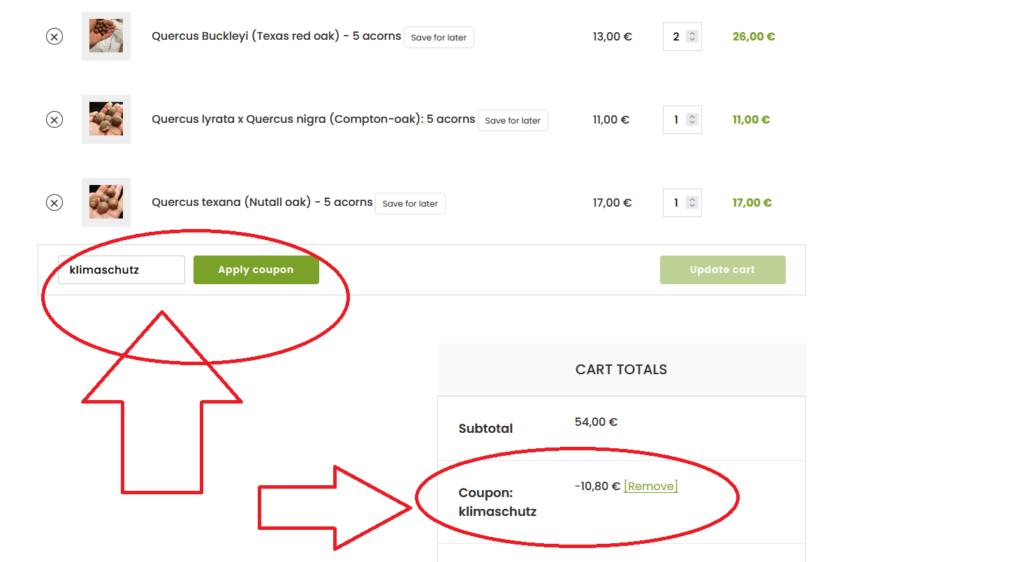
Many interesting climarobust species have been supplied. For example Ostrya carpinifolia, the European hop hornbeam. It thrives in large parts of the Mediterranean region, from Provence to Greece. The almond tree (Prunus dulcis) is of course also interesting and a real eye-catcher. Who doesn’t dream of it? To have a beautifully flowering almond tree in your garden (as a potted plant) in spring. Mediterranean flair in your own home. Or the olive (Olea europaea), which is usually found in Italy, Spain or Greece. The climate is changing rapidly. Of course, global warming is not good at all, but for the flora it means that many “climate trees” are now also migrating to Central Europe. And they are still guaranteed hot and dry summers.
Of course, there can still be freezing cold winters, so always bear the “hardiness zone” in mind when growing plants. Many species from hot regions are therefore better grown in pots that can be brought indoors in January, for example, if necessary. Something like this can look wonderful: A large terracotta pot and an almond tree, a caper bush or a chestnut tree in it. It creates the flair of a vacation in Tuscany, Sicily or southern Spain. And of course you are contributing to diversity.
Growing plants “from seed” is a great pleasure, and then there are the climatic trees 🙂 You look after the little seedlings, are happy when they get bigger, at some point they form the first buds, create the first shade growth…Wonderful.
E.G. we now have: Pistachio tree (Pistacia vera)
Feijoa sellowiana (Brazilian guava)
Calycanthus floridus (true spice bush)
Cupressus arizonica (Arizonacypress)
Acacia dealbata (silver acacia)
Myrtus communis (myrtle)
Capparis spinosa (caper bush)
“Wild olive” (Olea europaea var oleaster)
Red horse chestnut (Aesculus carnea)
Black walnut (Juglans nigra)
Take a look at the store: https://quercus.guru/produkt-kategorie/andere-baeume-ausser-eicheln/
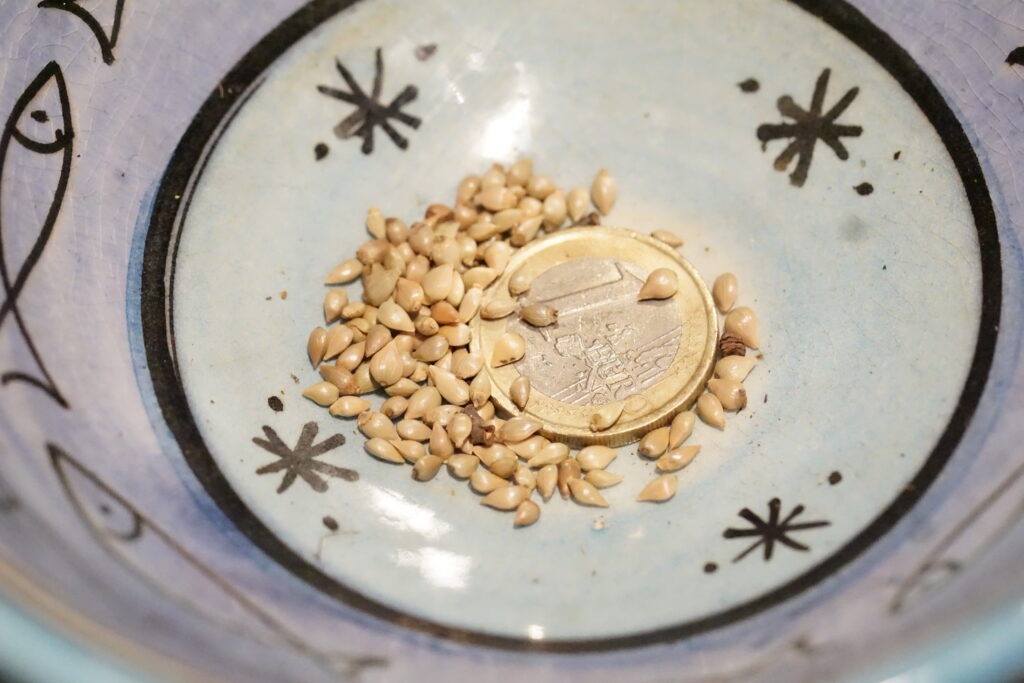
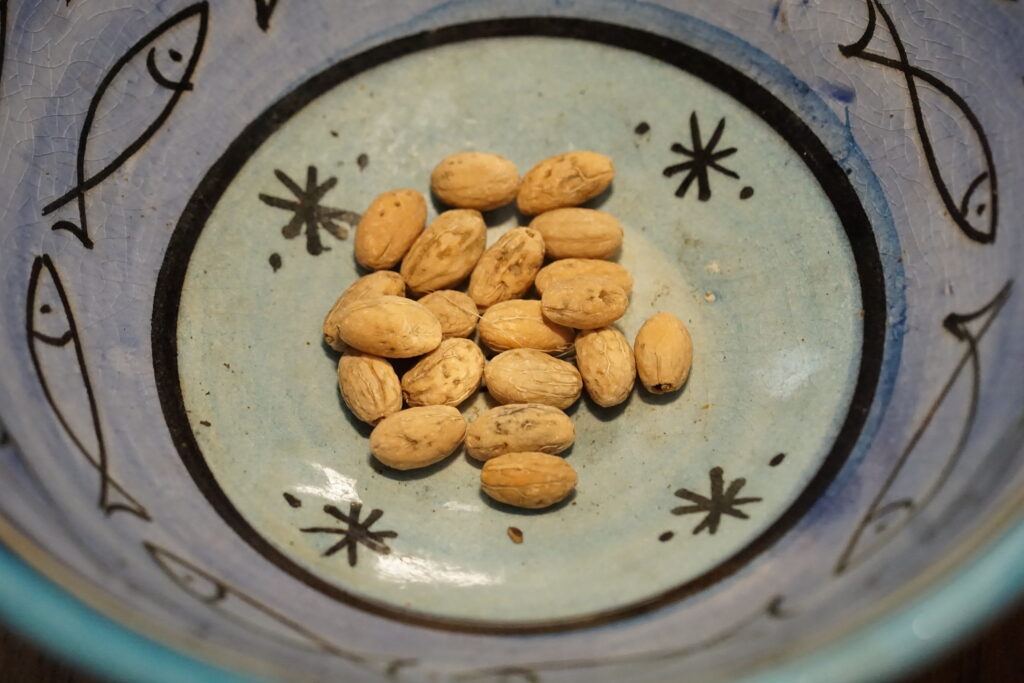
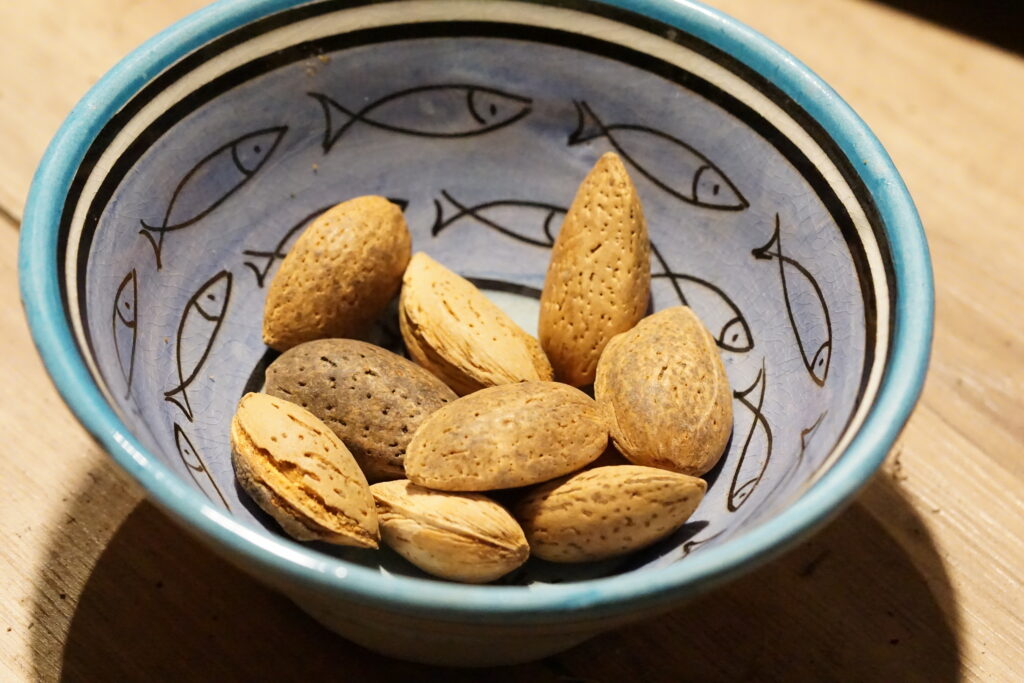
New in our store:
Quercus georgiana
Quercus alnifolia
Quercus infectoria subsp. veneris
Quercus senescens
Quercus mexicana x grahamii
Quercus acutissima
Quercus coccifera subs. calliprinos
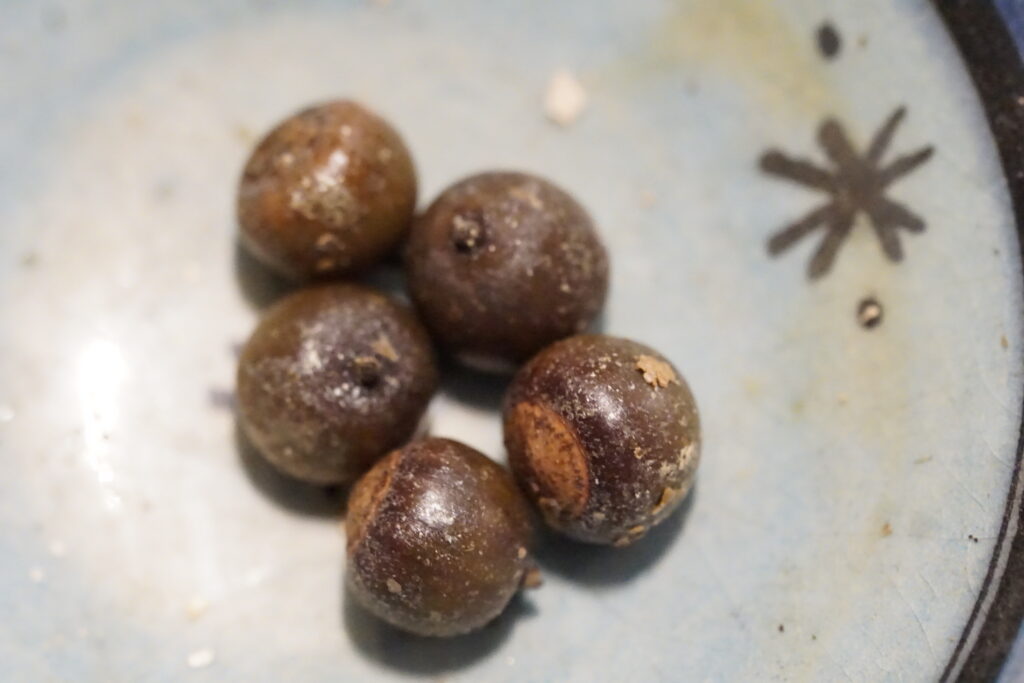
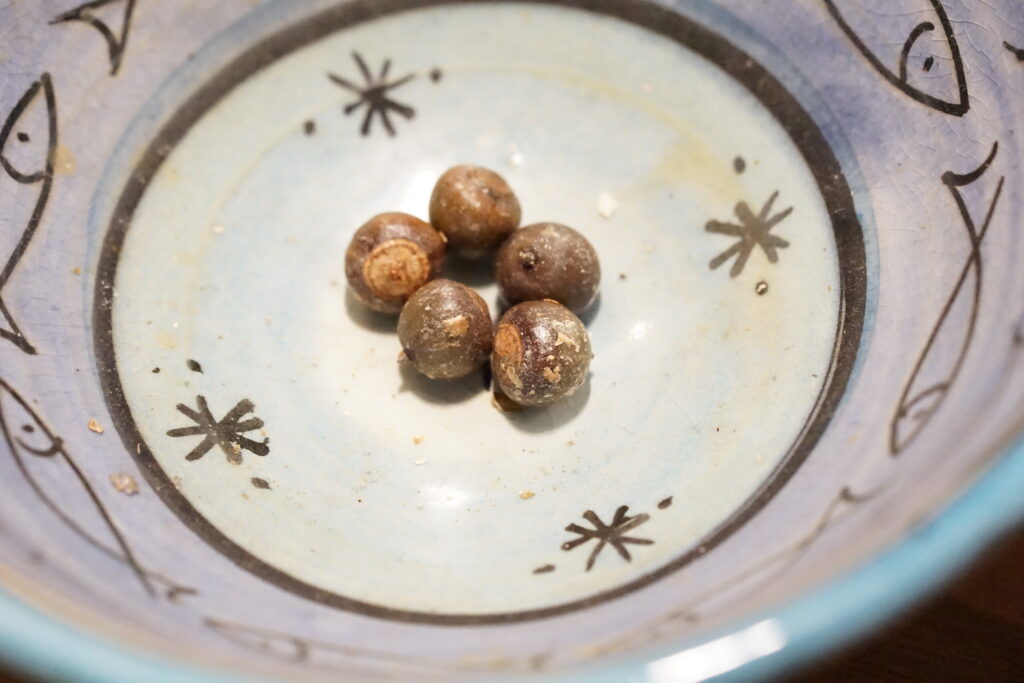
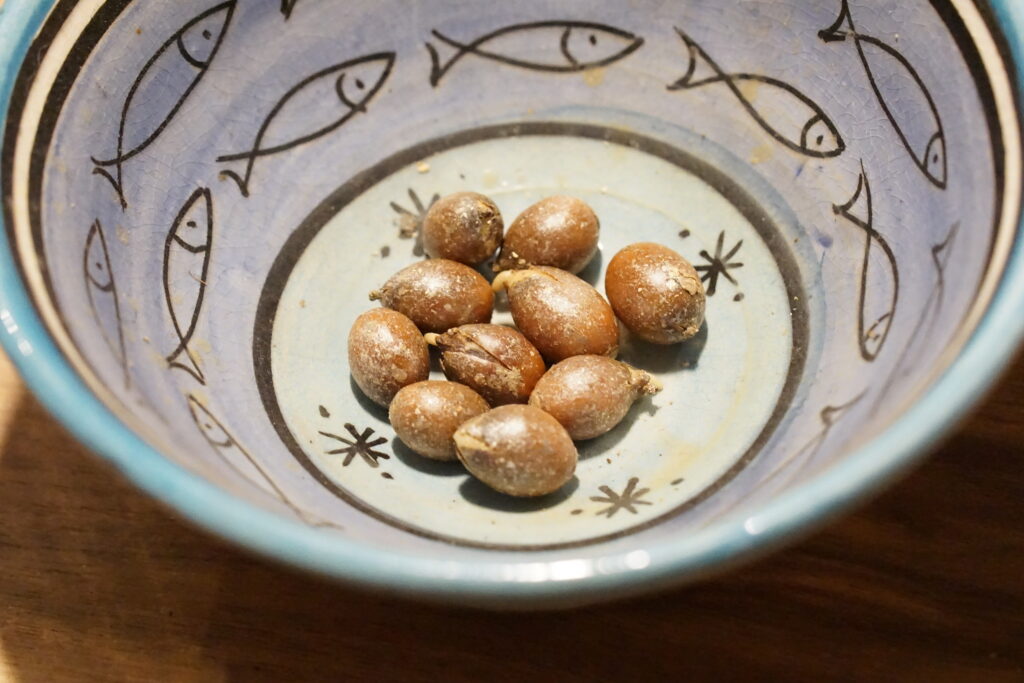
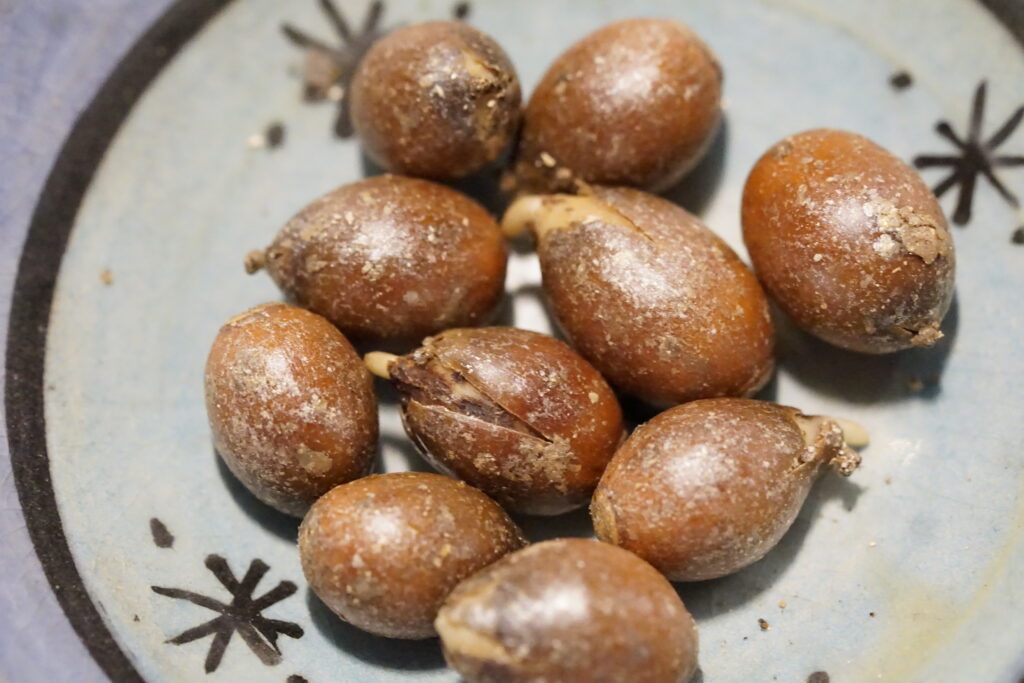
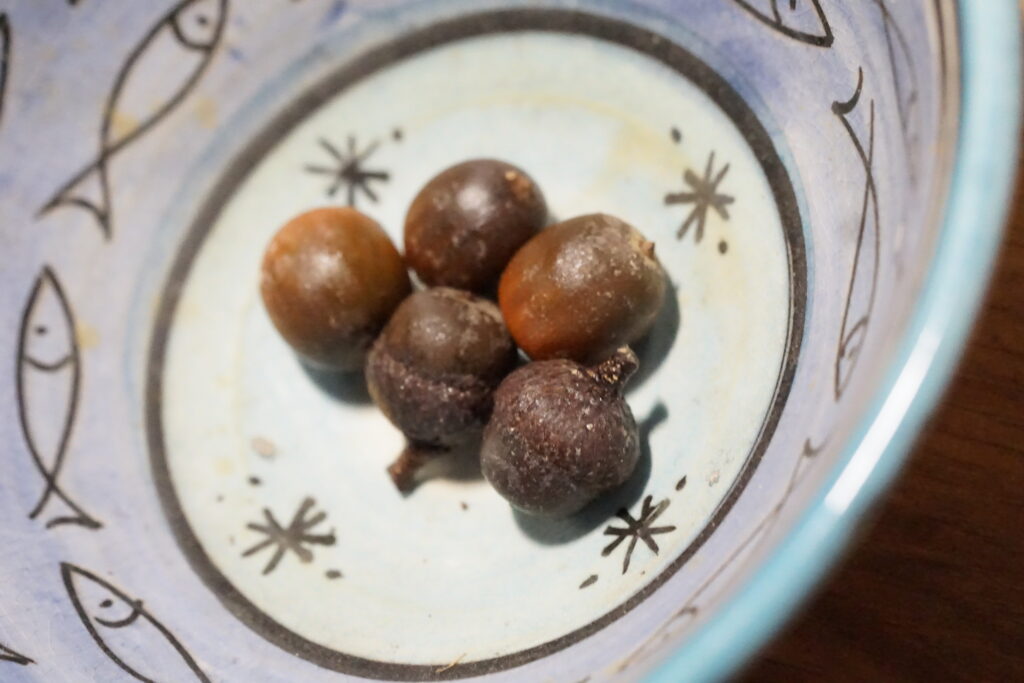
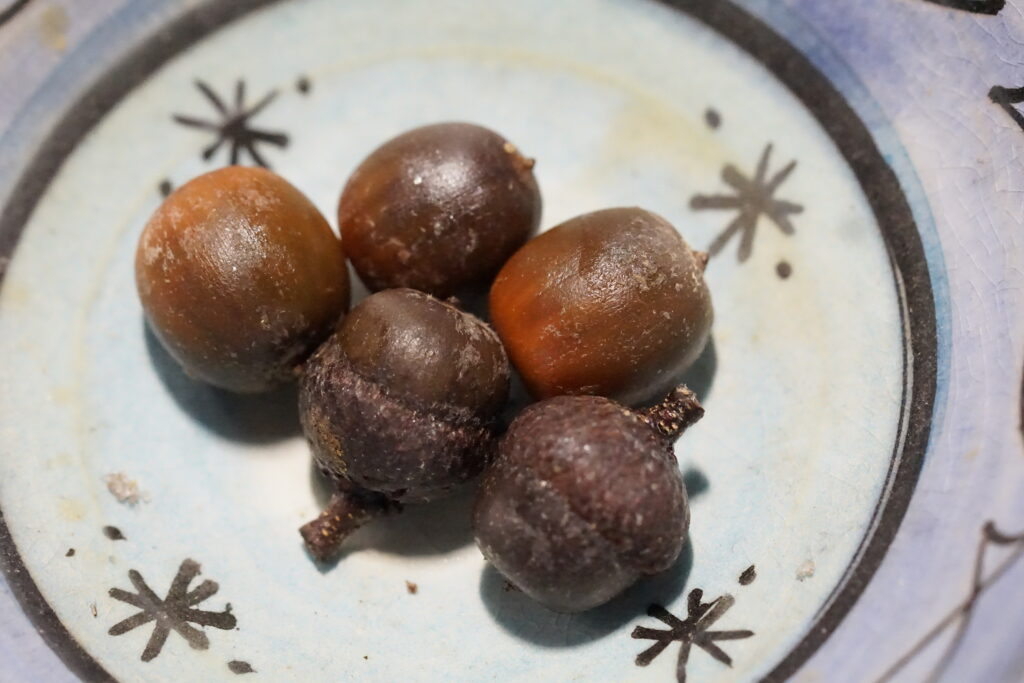
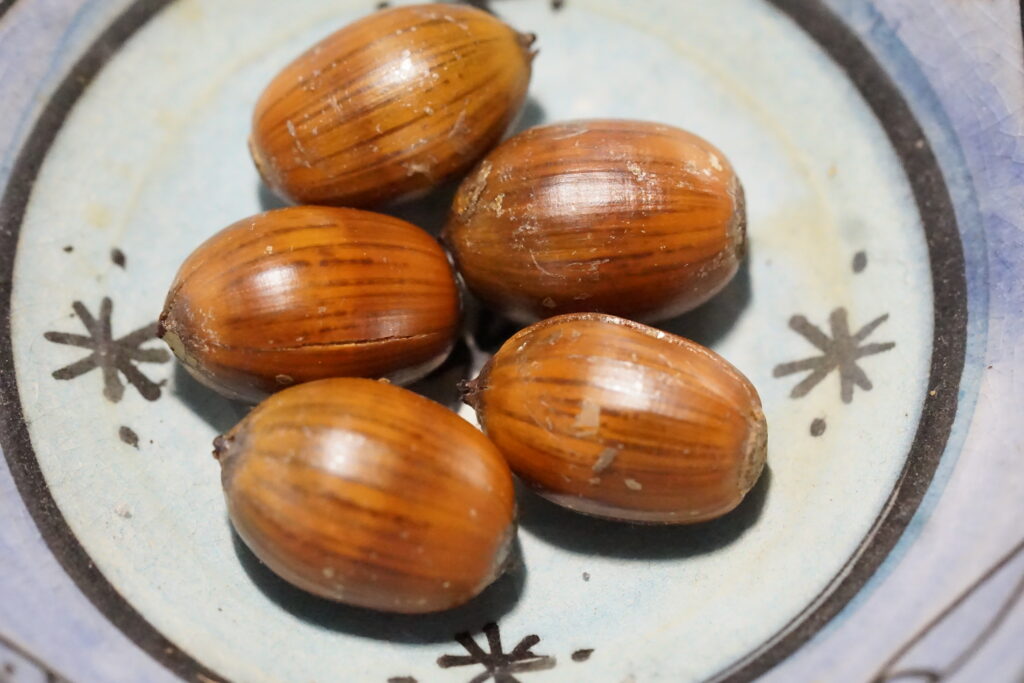
Oaklovers – Quercus international. There is a new group on Facebook – “Oaklovers – Quercus international”. You can join here:
https://www.facebook.com/groups/518874377741330
Growing oak trees is a wonderful hobby. It decelerates, it calms, it grounds. And it helps us humans to create something meaningful, to realize that we can be a productive part of the whole. And of course, even if it is actually a classic “solitary hobby”, it makes sense to talk about the specimens of the genus “Quercus” from time to time. After all, there are around 600 Quercus species.
An exchange is now possible on Facebook (see above). Which species could this be? What general conditions need to be considered for different species? Where can you get good seed? Who might swap acorns? Which species can be discovered in which botanical garden? There is a lot to discuss.
Quercus-related species from the beech family (Fagacea) can also be discussed. By the way, from time to time small acorn shipments are raffled off among the members of the group. So it makes sense to actively participate in the group.
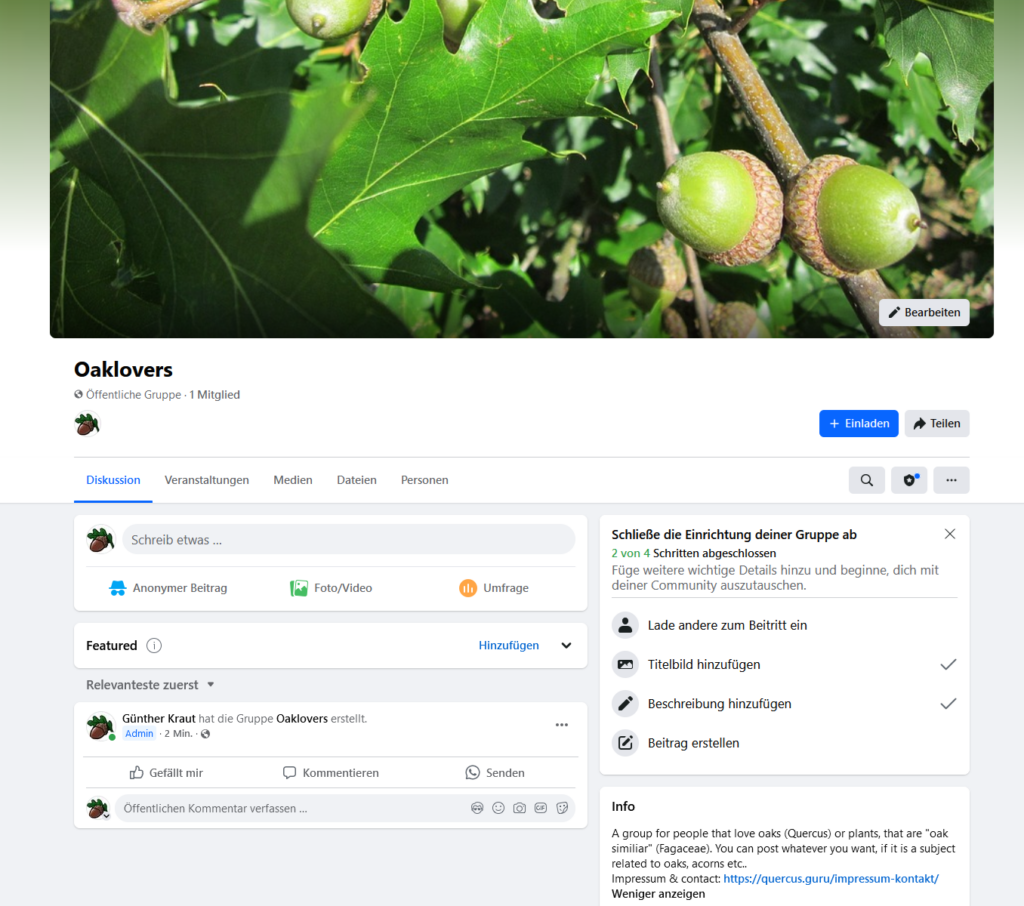
Of course you will also find dates here, e.g. dates for https://www.internationaloaksociety.org/. Or also information on special oak species for sale, e.g. here: https://quercus.guru/shop/.
Small competitions are also held from time to time: e.g. “Who sends the ‘most beautiful’ oak photo?”, or: “Who knows a particularly spectacular oak species?” etc.
You can also explain your motivations there. Why do you grow oak trees? What significance does it have for you? Do you want to do something for nature conservation or climate protection? What is the core of your enthusiasm for oaks?